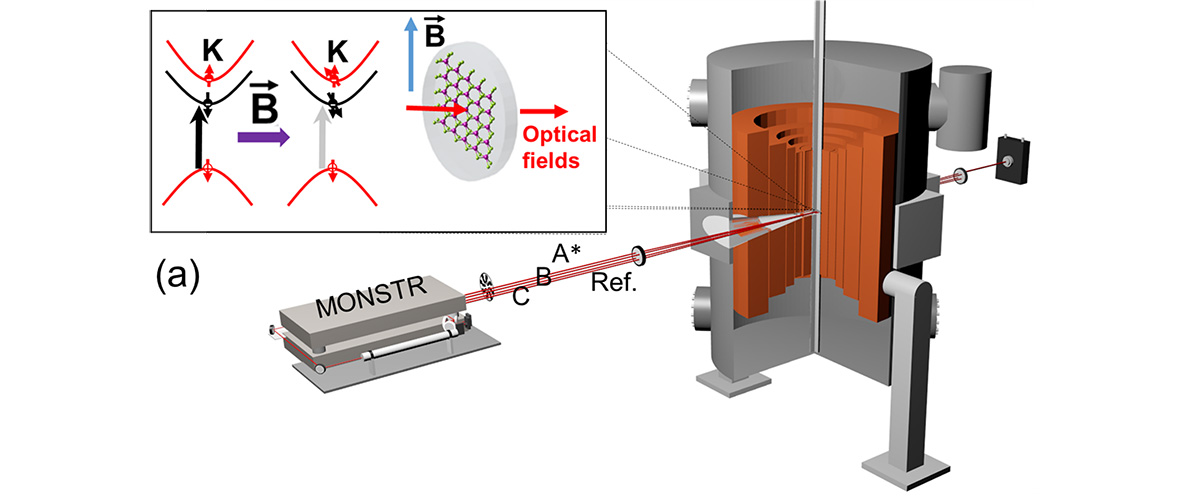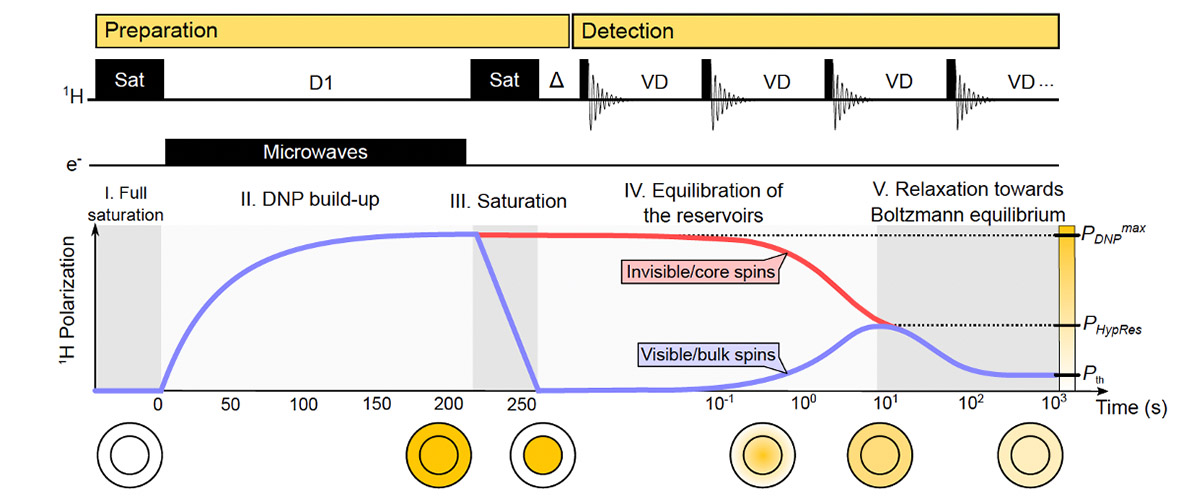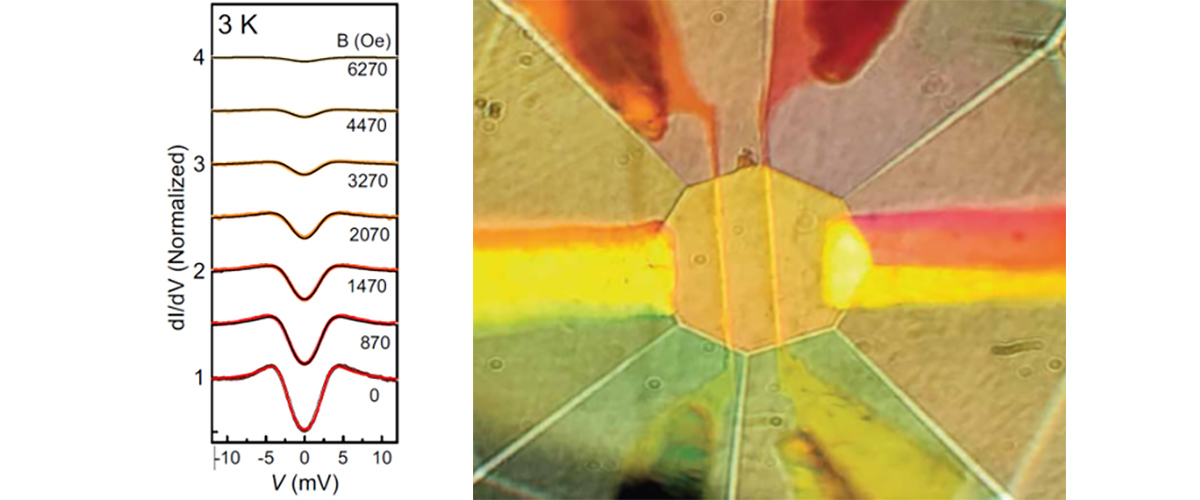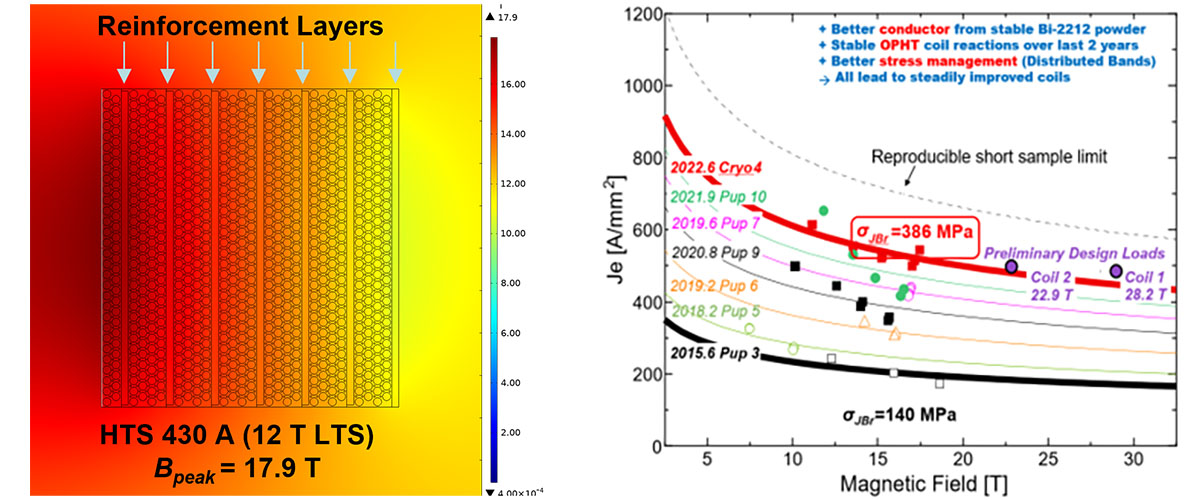What did scientists discover?
Electron-hole pairs (excitons) in semiconducting materials are referred to as bright or dark based on their response to optical stimulation. Properties of two-dimensional (2D) materials that cannot be directly seen – properties called “dark” – can still affect important optical behaviors of a two-dimensional material. Large magnetic fields can manipulate these unseen “dark” properties by coupling them to visible – or “bright” – properties.
The experiment explored one of the prominent classes of atomically-thin, two-dimensional materials, the transition metal dichalcogenides, and found that magnetic-field-driven coupling enabled the dark quasi-particles to interact with the bright optical properties, thereby changing the optical properties of the 2D material.
Why is this important?
Many two-dimensional materials grow naturally in atomically thin layers. Their applications range from light emitting devices and displays, to electronic devices, to solar cells. Understanding their optical properties under extreme conditions is important for understanding their behavior when directed toward potential applications. In particular, understanding how the “dark” properties affect the desired optical emission and coherence of the “bright” properties is crucial for optimizing materials considerations when designing devices for new applications like the future use of these materials in quantum information technologies.
Who did the research?
Varun Mapara1, Arup Barua1, Volodymyr Turkowski2, M. Tuan Trinh1, Christopher Stevens1, Hengzhou Liu1, Florence A. Nugera1, Nalaka Kapuruge1, Humberto Rodriguez Gutierrez1, Fang Liu3, Xiaoyang Zhu4, Dmitry Semenov5, Stephen A. McGill5, Nihar Pradhan6, David J. Hilton7, and Denis Karaiskaj1
1University of South Florida; 2University of Central Florida; 3Stanford University; 4Columbia University; 5National MagLab; 6Jackson State University; 7University of Alabama
Why did they need the MagLab?
As with virtually all materials from which one seeks to develop a new solid-state device, very high magnetic fields are necessary to manipulate the coherence of wave-functions and/or the coupling of energy levels in order to provide a fundamental understanding of the material and, hence, the potential to manipulate the material toward new applications. The MagLab’s 25T Split-Helix magnet is a world-unique magnet, enabling direct optical access to the sample as it sits at the center of the 25T magnetic field.
Details for scientists
- View or download the expert-level Science Highlight, Coherent Coupling and Hybridization of Bright and Dark Excitons Enabled by Intense Magnetic Fields
- Read the full-length publication, Bright and Dark Exciton Coherent Coupling and Hybridization Enabled by External Magnetic Fields, in American Chemical Society Nano Letters
Funding
This research was funded by the following grants: Denis Karaiskaj (DOE DE-SC0012635); Xiaoyang Zhu (NSF DMR-2011738); Volodymyr Turkowski (DOE DE-FG02-07ER46354); G.S. Boebinger (NSF DMR-1644779)
For more information, contact Tim Murphy.






